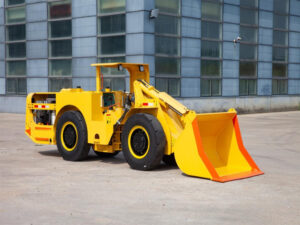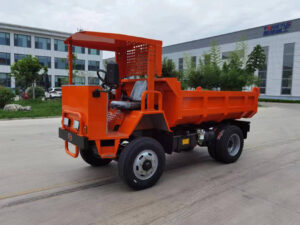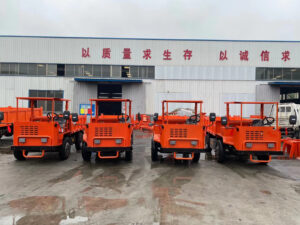
Troubleshooting the overheating of the mine truck engine
The engine provides power for the walking of the mine truck and is the power device of the mine truck. If the engine fails, it will not only affect the production operations, but also affect the safe driving of the mine truck. As the power unit of a mine truck, it will cause some problems and failures of one kind or another as the operating time of the mine truck increases, thereby affecting the normal operation and driving safety of the mine truck.
Engine overheating means that the engine temperature exceeds the maximum operating temperature (80~90℃), and sometimes the boiling phenomenon occurs. From the analysis of the main structure of the diesel engine cooling system and its heat dissipation principle, the main reasons and elimination methods are common in the following situations:
1. Insufficient cooling water causes the diesel engine to overheat. The heat in the engine body is mainly carried away by the cooling water and dissipated. If the cooling water decreases due to leakage or evaporation of the water tank and water pipe, the heat will naturally be taken away, and the heat accumulated in the engine will be too much, resulting in the engine overheating.Judgment and removal method: Check whether the water tank and external pipelines are leaking. If it leaks, it means that the engine is overheating due to water leakage. The leakage should be removed in time. If there is no water leakage, you can open the radiator and add water cover to observe whether the cooling water is sufficient. Most of the engine is overheated due to the long-term failure to add cooling water, and should be replenished in time.
2. The fan belt is too loose and slippery, causing the cooling water circulation to slow down, causing the engine to overheat. The cooling intensity of the diesel engine depends on the fan speed. If the fan transmission belt is too loose and slips, it will inevitably cause the power transmission efficiency to decrease, the fan speed will decrease, and the cooling intensity will decrease. At the same time, the pump speed will also decrease, and the displacement will decrease, which will reduce the cooling water flow rate and cannot quickly take away the heat, resulting in poor heat dissipation of the diesel engine. Judgment and exclusion method: When the diesel engine stops working, use your hand to pull the fan blade. If the fan can slide, it means that the fan belt is too loose and causes poor heat dissipation, and should be adjusted. Adjust the belt tensioning device to achieve reasonable tension.
3. Thermal controller fails to cause poor heat dissipation. The thermostat is located at the engine outlet, and its function is to adjust the cooling intensity. When the body temperature of the diesel engine is low, it effectively cuts off the large circulation waterway and automatically connects the small circulation waterway to reduce heat dissipation to make the diesel engine temperature rise quickly; when the temperature rises to a certain temperature after the diesel engine is running for a period of time, the thermostat will automatically turn on the large circulation and close the small circulation, increase the heat dissipation to keep the diesel engine water temperature within a certain range. If the thermostat is damaged, the large circulation water circuit cannot be connected, resulting in poor cooling water circulation and poor heat dissipation of the diesel engine lead to overheating. Inspection and removal method: Remove the thermostat and put it in hot water. When the temperature reaches about 70℃, the main valve should start to open, and all should be opened at 80~86℃. The valve height is generally not less than 9mm. If the requirements do not meet the requirements, repair or replacement should be carried out in time.
4. The cooling system has too much scale, which will cause poor heat dissipation of the body when it is severe. Diesel engines that have been used for a long time are prone to have too thick mass accumulation of cylinder blocks and radiators, resulting in poor heat dissipation of the diesel engine. Methods to exclude:Chemical cleaning of the cylinder and radiator. Commonly used chemical cleaning solutions include 8% caustic soda solution, 10% sodium carbonate solution and 2.5% hydrochloric acid solution. When using the first two cleaning fluids, the solution should be kept in the cooling system for 10 to 12 hours; when using the third cleaning fluid, the engine should be started after injection and run at a low speed without load for 1 hour. During the cleaning process, the thermostat should be removed; after the cleaning liquid is released, the drain switch should be removed in time to remove dirt, and then rinse the engine’s water cover and radiator with clean water according to the countercurrent method until all the outflow water is cleaned.
5. The fuel injection time is too late and leads to poor heat dissipation. The fuel injection advance angle is too small, and most of the combustion process is transferred to expansion work. The volume above the piston increases, the contact area between the flame and the cylinder wall increases, and the heat absorbed increases, thereby reducing the utilization rate of thermal efficiency, increasing the exhaust temperature, and increasing the heat transferred to the cooling water, causing the engine to overheat.





